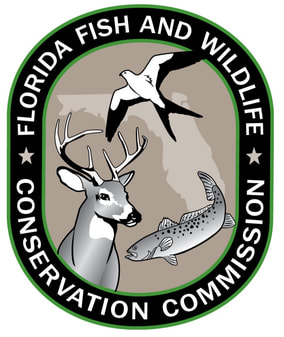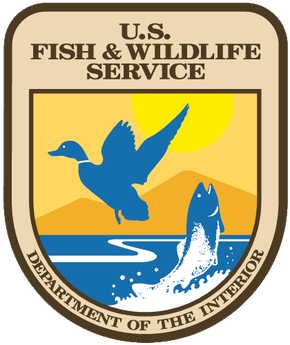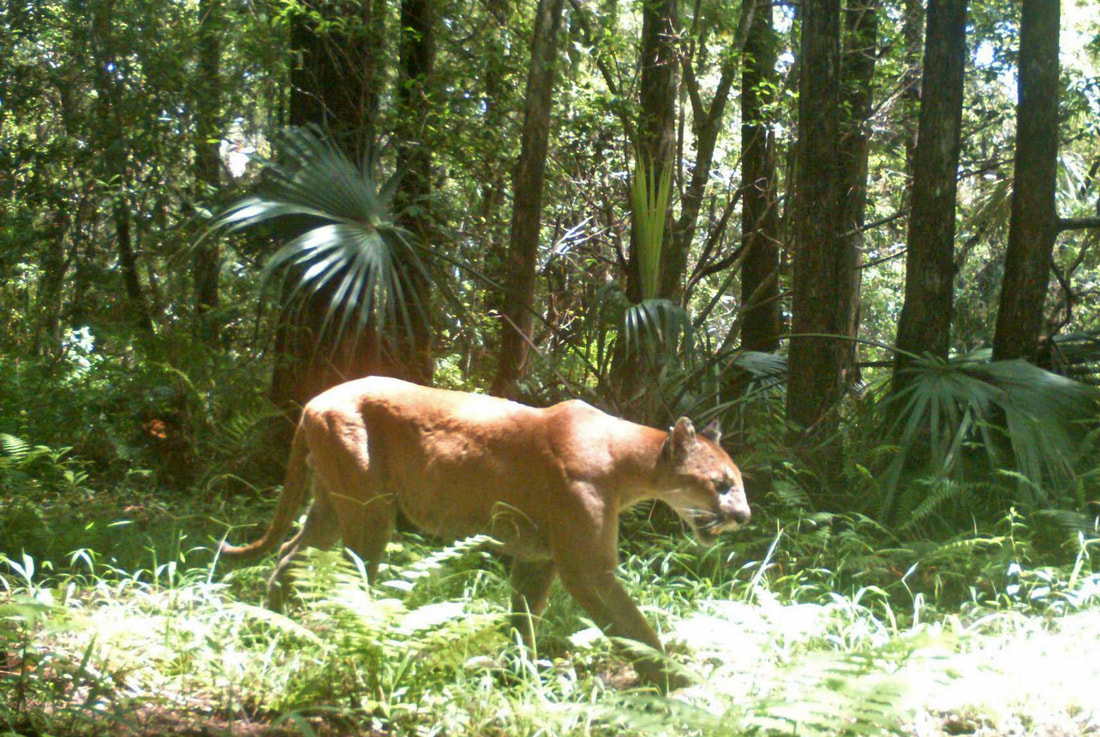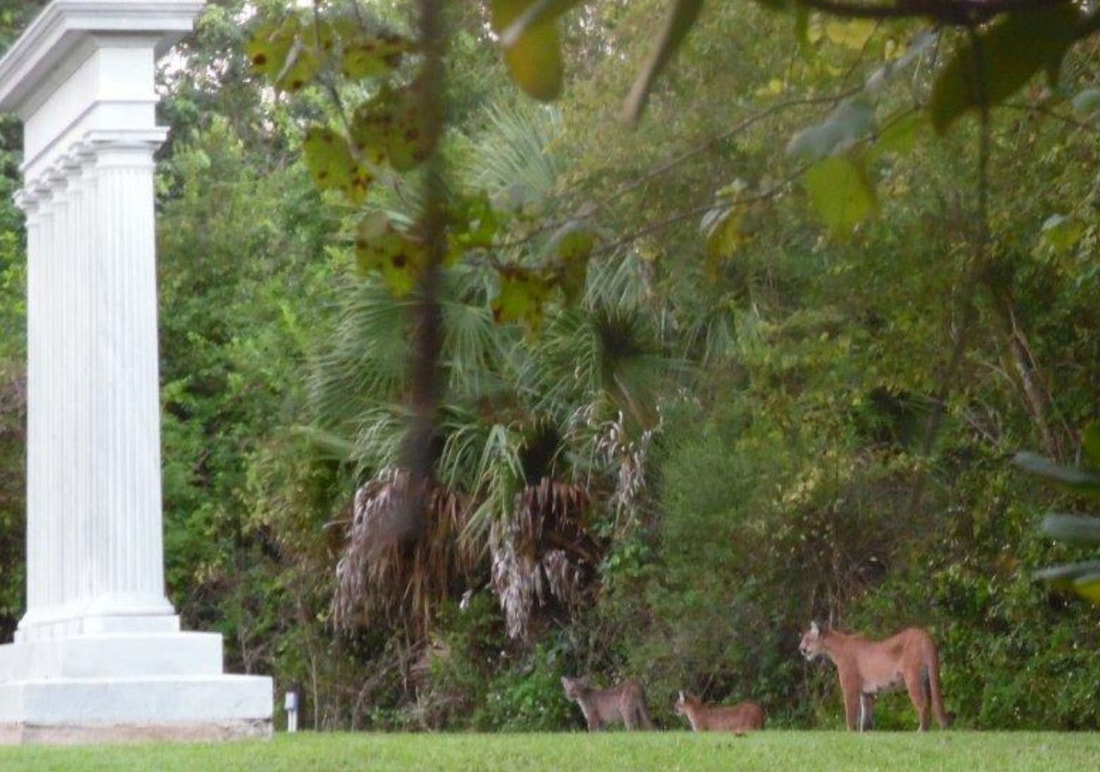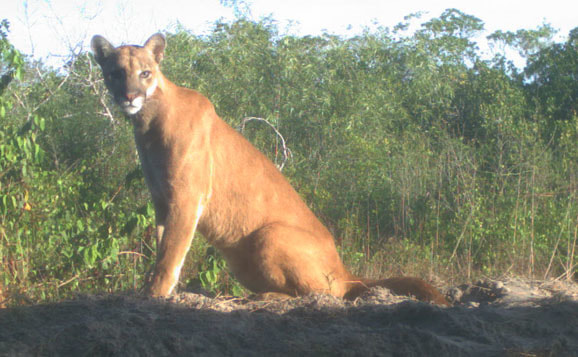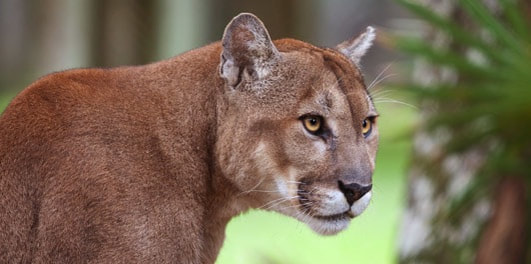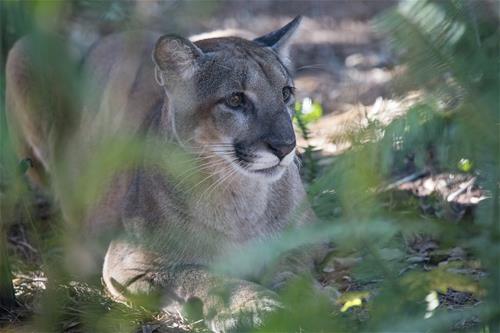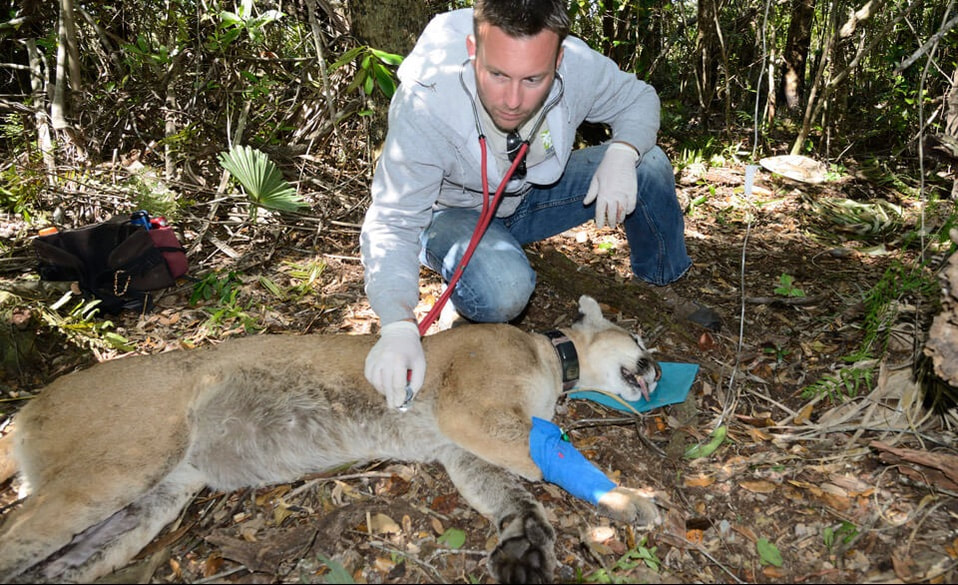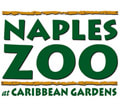Discover the agencies involved in panther conservation, the state and national parks where panthers live, and the zoos caring for panthers outside the wild.
People Working for Panthers
These state and federal agencies collaborate on the implementation of management plans to both recover panthers and address human-panther issues.
These state and federal agencies collaborate on the implementation of management plans to both recover panthers and address human-panther issues.
Support Wild Areas Where Panthers Live
These sites are habitat for panthers. Visit or make a panther-dedicated donation to their supporting organization.
Report a Panther Sighting
If you have images of panthers or photos of panther tracks, especially north of the Caloosahatchee River, you can submit your photos to the Florida Fish and Wildlife Conservation Commission.
These sites are habitat for panthers. Visit or make a panther-dedicated donation to their supporting organization.
Report a Panther Sighting
If you have images of panthers or photos of panther tracks, especially north of the Caloosahatchee River, you can submit your photos to the Florida Fish and Wildlife Conservation Commission.
|
SWAMP Education
Each year, Collier County's 6th grade students get their feet wet in the swamp. Students track a panther using radio telemetry, collect data by to see how pure the water is, and learn to identify vegetation and animals. These hands-on experiences provide a clearer understanding of their connection to the natural world so they may become better informed citizens and stewards. |
Big Cypress National Preserve
Larger than Rhode Island, the Preserve is a 729,000-acre freshwater swamp ecosystem providing the largest contiguous acreage of habitat for panthers in south Florida. Its hardwood hammocks and other upland areas offer abundant denning sites for panthers and its prairies are home to deer and other prey. The Preserve has a robust panther monitoring program with decades of research. Paradise (Almost) Lost In the 1960s, all was at risk including the neighboring Everglades as the world's largest jetport began construction in the Big Cypress Swamp. A coalition of environmentalists, hunters, Miccosukees, Seminoles, citizen activists, and many others lobbied to protect this ecosystem. In 1974, Big Cypress became the nation's first national preserve. Along with hiking, canoeing, fishing, and biking, the Preserve allows hunting, off road vehicle use, oil exploration, and private land ownership. Like any compromise, not all received what they hoped or, but had these critical lands been lost, the panther may not have survived into the 21st century. Learn More. |
|
Florida Panther National Wildlife Refuge
This nearly 27,000 acre refuge was established in 1989 for the primary purpose of protecting the Florida panther and its habitat. The refuge includes the core of occupied panther territory and serves as an important wildlife corridor connecting public and private lands where panthers roam. While the majority of the refuge is closed to public access, there are two walking trails including a 1/3 mile wheelchair-accessible loop trail. Learn More. Support the Friends of the Florida Panther Refuge. |
|
Everglades National Park
The Everglades is the largest subtropical wilderness in the United States and protects an unparalleled landscape that provides 1.5 million acres of habitat for numerous rare and endangered species like the manatee, American crocodile, and the Florida panther. Along with being one of the most famous parks in the US, it is also internationally recognized as a World Heritage Site, International Biosphere Reserve, a Wetland of International Importance, and a specially protected area under the Cartagena Treaty. Learn More. |
|
Collier-Seminole State Park
The 7,271-acre park lies partly within one of the largest mangrove swamps in the world. A wide variety of wildlife including panthers and other imperiled species live within its unusual blend of temperate and tropical native plant communities. The park also features one of three original stands of royal palms in Florida, coexisting with large areas of mangrove swamp. Learn More. |
|
Fakahatchee Strand Preserve State Park
This is the largest state park in Florida and is home to a variety of species that can be found nowhere else in the continental United States. It's 75,000 acres are the orchid capital of the continent with 44 native orchids and it is the only place in the world where bald cypress trees and royal palms share the forest canopy. The 2,500 foot long boardwalk offers a beautiful view of pristine bald cypress swamp and a number of Florida panthers have been photographed along the 11 miles of Jane's Memorial Scenic Drive in the park. Learn More. |
|
Rookery Bay National Estuarine
Research Reserve As part of 110,000 acres of coastal lands and waters owned and managed by the State of Florida, the Reserve offers 6,000 acres of upland habitat. Since 2000, Reserve biologists have observed subtle clues that Reserve lands are occasionally visited by Florida panthers. Over the past few years, staff installed wildlife cameras to not only confirm these coastal areas are important habitat, but to learn more about their overall health and other details. Learn More. |
|
Audubon's Corkscrew Swamp Sanctuary
The 13,000-acre Sanctuary features a 2.5-mile boardwalk through pine flatwoods, wet prairie, around a marsh, and finally into the largest old growth Bald Cypress forest in North America. It's home to alligators, otters, white-tailed deer, wading birds, songbirds, raptors and the Florida panther. Learn More and See the Panther on the Boardwalk Video. |
Support Those Who Care for Panthers
These sites provide homes for panthers that are not able to live in the wild and/or additional resources to support their survival in the wild. Visit or make a panther-dedicated donation.
These sites provide homes for panthers that are not able to live in the wild and/or additional resources to support their survival in the wild. Visit or make a panther-dedicated donation.
|
Uno: Featured in the Video
Since opening in 2015, the Florida Panthers exhibit at Naples Zoo was home to Uno, a non-releasable panther that was permanently blinded after being struck by two blasts from a shotgun. An estimated six weeks after being shot, he was found emaciated and in need of emergency veterinary care. The circumstances surrounding his shooting are unknown. Sadly, Uno passed away in 2018. His legacy lives on in this video and with those who were inspired by this extraordinary cat. |
Naples Zoo at Caribbean Gardens
After a kitten was found on its own in Big Cypress National Preserve, Naples Zoo agreed to provide a permanent home to her. Named Athena, she lives in the habitat where Uno was. To navigate some of the nuanced issues surrounding this iconic cat within the primary range of panthers, Naples Zoo at Caribbean Gardens partnered with the US Fish and Wildlife Service and the Florida Fish and Wildlife Conservation Commission to create Florida Panthers, a conservation-focused exhibit featuring a publicly-viewable panther habitat with educational messaging as well as a behind-the-scenes rehabilitation area to provide short term care for orphaned or injured panthers. In the few short years since opening, the rehabilitation facility at this nationally accredited zoo has already provided care for several panther kittens. Florida Panther Festival On the first Saturday each November, Naples Zoo hosts a celebration of Florida's state animal by bringing all the natural partners together to share the latest updates on panthers, how Floridians can get involved, and programs available for those impacted by panthers. Learn more or become a Festival sponsor. |
|
White Oak Conservation
Through a partnership with the US Fish and Wildlife Service and the Florida Wildlife Conservation Commission, White Oak rehabilitates injured or orphaned Florida panthers and returns them to their homes in South Florida. 18 panthers have been released back into the wild through this successful partnership. While at White Oak the panthers live in very large natural enclosures and have minimal interaction with people to maintain their wildness and natural instincts. Learn more. |
|
Zoo Tampa
From expert veterinary care both on-site and in the field, ZooTampa at Lowry Park has played a crucial role in panther conservation for years. They've hosted numerous Florida panthers on their path back to the wild -- or provided these cats the critical and specialized care they need to thrive. In the future, the Zoo plans on expanding and refreshing its panther habitat, increasing the Zoo’s capacity to care for these animals. Guests can see three endangered cats at ZooTampa and learn how they can play a role in protecting these animals. Learn more. |
|
Zoo Miami
Visitors can see a Florida panther, Mahala, in Zoo Miami's Florida: Mission Everglades area. The Zoo also sends one of their veterinarians to assist the NPS and FWC in conducting their monitoring of the resident Florida Panther population in Big Cypress National Preserve. This ongoing monitoring program helps guide policymakers in managing the population, tracking mortality events, and learning about kitten survival. Learn more. |
|
Jacksonville Zoo and Gardens
A Florida panther can be seen in Jacksonville Zoo and Gardens' (JZG) Wild Florida area. This female arrived in 2005 after being abandoned by her mother in the Florida Panther National Wildlife Refuge in Collier County. The panther is part of JZG's growing initiative to teach guests how to live well with wildlife, an effort to reduce conflict between humans and the animals that live around them. Learn more. |
|
Palm Beach Zoo & Conservation Society
Rescued as a cub after her mother was killed by a vehicle near Collier-Seminole State Park, Sassy temporarily lived at Naples Zoo before moving to Palm Beach Zoo – her forever home. Being left to fend for herself at such a young age made a return to the wild impossible. The Florida panther is one of our most endangered animals, and Sassy's story speaks to the Zoo’s unrelenting commitment to rescue, rehabilitate, and help save species. Learn more. |
|
Ellie Schiller Homosassa Springs Wildlife State Park
This Florida state park is home to Yuma, a panther found as a kitten by biologists at Florida Panther National Wildlife Refuge. The kitten had apparently been abandoned, and was dehydrated and non-responsive. After receiving care at Zoo Tampa, he is now a healthy cat and was joined by Sakata, another male kitten found in an agricultural field that was temporarily cared for by Naples Zoo before going to Homosassa Springs. Learn more. |
|
|
The intent of this video and website are to highlight the complexity of Florida panther recovery and to give voice to the diversity of stakeholders involved and affected. Panthers are part of Florida's heritage and can play a significant role in the future of the state through ongoing protection of public lands as well as conservation easements and other programs that enable private landowners to maintain large wild spaces. This video was created through a collaboration between Big Cypress National Preserve, Florida National Parks Association, Naples Zoo at Caribbean Gardens, and the South Florida National Parks Trust. The website is an effort of the Naples Zoo.
|
|
This website and its contents are funded and maintained by the Naples Zoo Conservation Fund Naples Zoo at Caribbean Gardens | 1590 Goodlette-Frank Road | Naples FL 34102 | 239.262.5409 | email | website |
